Superconductivity in 122-Type Pnictides without Iron
Abstract
:1. Introduction
2. Results
2.1. Crystal Structure
2.2. Normal State Properties
2.3. Superconducting Properties
2.3.1. LaRu2P2
2.3.2. ANi
2.3.3. APt
2.3.4. APd
3. Relationship between Structure and
4. Summary and Outlook
Acknowledgments
Author Contributions
Conflicts of Interest
References
- Rotter, M.; Tegel, M.; Johrendt, D. Superconductivity at 38 K in the iron arsenide (Ba1−xKx)Fe2As2. Phys. Rev. Lett. 2008, 101, 107006. [Google Scholar] [CrossRef] [PubMed]
- Sefat, A.S.; Jin, R.; McGuire, M.A.; Sales, B.C.; Singh, D.J.; Mandrus, D. Superconductivity at 22 K in Co-doped BaFe2As2 crystals. Phys. Rev. Lett. 2008, 101, 117004. [Google Scholar] [CrossRef] [PubMed]
- Jiang, S.; Xing, H.; Xuan, G. Superconductivity up to 30 K in the vicinity of the quantum critical point in BaFe2(As1−xPx)2. J. Phys. Condens. Matter 2009, 21, 382203. [Google Scholar] [CrossRef] [PubMed]
- Ishida, K.; Nakai, Y.; Hosono, H. To what extent iron-pnictide new superconductors have been clarified: A progress report. J. Phys. Soc. Jpn. 2009, 78. [Google Scholar] [CrossRef]
- Paglione, J.; Greene, R.L. High-temperature superconductivity in iron-based materials. Nat. Phys. 2010, 6, 645–658. [Google Scholar] [CrossRef]
- Jeitschko, W.; Glaum, R.; Boonk, L. Superconducting LaRu2P2 and other alkaline earth and rare earth metal ruthenium and osmium phosphides and arsenides with ThCr2Si2 structure. J. Solid State Chem. 1987, 69, 93–100. [Google Scholar] [CrossRef]
- Bauer, E.D.; Ronning, F.; Scott, B.L.; Thompson, J.D. Superconductivity in SrNi2As2single crystals. Phys. Rev. B 2008, 78, 172504. [Google Scholar] [CrossRef]
- Ronning, F.; Bauer, E.D.; Park, T.; Baek, S.H.; Sakai, H.; Thompson, J.D. Superconductivity and the effects of pressure and structure in single-crystalline SrNi2P2. Phys. Rev. B 2009, 79, 134507. [Google Scholar] [CrossRef]
- Mine, T.; Yanagi, H.; Kamiya, T.; Kamihara, K.; Hirano, M.; Hosono, H. Nickel-based phosphide superconductor with infinite-layer structure BaNi2P2. Solid State Commun. 2008, 147, 111–113. [Google Scholar] [CrossRef]
- Ronning, F.; Kurita, N.; Bauer, E.D.; Scott, B.L.; Park, T.; Klimczuk, T.; Movshovich, R.; Thompson, J.D. The first order phase transition and superconductivity in BaNi2As2 single crystals. J. Phys. Condens. Matter 2008, 20, 342203. [Google Scholar] [CrossRef]
- Hirai, D.; Takayama, T.; Higashinaka, R.; Aruga-Katori, H.; Takagi, H. Superconductivity in Layered Pnictides BaRh2P2 and BaIr2P2. J. Phys. Soc. Jpn. 2009, 78, 023706. [Google Scholar] [CrossRef]
- Berry, N.; Capan, C.; Seyfarth, G.; Bianchi, A.D.; Ziller, J.; Fisk, Z. Superconductivity without Fe or Ni in the phosphides BaIr2P2 and BaRh2P2. Phys. Rev. B 2009, 79, 180502. [Google Scholar] [CrossRef]
- Kudo, K.; Nishikubo, Y.; Nohara, M. Coexistence of superconductivity and charge density wave in SrPt2As2. J. Phys. Soc. Jpn. 2010, 79, 123710. [Google Scholar] [CrossRef]
- Han, J.T.; Zhou, J.S.; Cheng, J.G.; Goodenough, J.B. A new pnictide superconductor without iron. J. Am. Chem. Soc. 2010, 132, 908–909. [Google Scholar] [CrossRef] [PubMed]
- Hirai, D.; Takayama, T.; Hashizumi, D.; Higashinaka, R.; Yamamoto, A.; Hiroko, A.K.; Takagi, H. Superconductivity in 4d and 5d transition metal layered pnictides BaRh2P2, BaIr2P2 and SrIr2As2. Phys. C 2010, 470, S296–S297. [Google Scholar] [CrossRef]
- Jiang, W.B.; Guo, C.Y.; Weng, Z.F.; Wang, Y.F.; Chen, Y.H.; Chen, Y.; Pang, M.; Shang, T.; Lu, X.; Yuan, H.Q. Superconductivity and structural distortion in BaPt2As2. J. Phys. Condens. Matter 2015, 27, 022202. [Google Scholar] [CrossRef] [PubMed]
- Anand, V.K.; Kim, H.; Tanatar, M.A.; Prozorov, R.; Johnston, D.C. Superconducting and normal-state properties of APd2As2 (A = Ca, Sr, Ba) single crystals. Phys. Rev. B 2013, 87, 224510. [Google Scholar] [CrossRef]
- Imai, M.; Emura, S.; Nishio, M.; Matsushita, Y.; Ibuka, S.; Eguchi, N.; Ishikawa, F.; Yamada, Y.; Muranaka, T.; Akimitsu, J. Superconductivity in 122 antimonide SrPt2Sb2. Supercond. Sci. Technol. 2013, 26, 075001. [Google Scholar] [CrossRef]
- Imai, M.; Ibuka, S.; Kikugawa, N.; Terashima, T.; Uji, S.; Yajima, T.; Kageyama, H.; Hase, I. Superconductivity in 122-type antimonide BaPt2Sb2. Phys. Rev. B 2015, 91, 014513. [Google Scholar] [CrossRef]
- Ganesanpotti, S.; Yajima, T.; Nakano, K.; Nozaki, Y.; Yamamoto, T.; Tassel, C.; Kobayashi, Y.; Kageyama, H. Superconductivity in LaPd2As2 with a collapsed 122 structure. J. Alloys Compd. 2014, 613, 370–374. [Google Scholar] [CrossRef]
- Ganesanpotti, S.; Yajima, T.; Tohyama, T.; Li, Z.; Nakano, K.; Nozaki, Y.; Tassel, C.; Kobayashi, Y.; Kageyama, H. LaPd2Sb2: A pnictide superconductor with CaBe2Ge2 type structure. J. Alloys Compd. 2014, 583, 151–154. [Google Scholar] [CrossRef]
- Kase, N.; Suzuki, H.; Tsukamoto, T.; Nakano, T.; Takeda, N. Superconductivity in Ternary Pnictide SrPd2Sb2 Polymorphs. J. Phys. Soc. Jpn. 2016, 85, 043701. [Google Scholar] [CrossRef]
- Guo, R.; Pan, B.J.; Yu, J.; Ruan, B.B.; Chen, D.Y.; Wang, X.C.; Mu, Q.G.; Chen, G.F.; Ren, Z.A. Superconductivity at 7.8 K in the ternary LaRu2As2 compound. Sci. Bull. 2016, 61, 921–924. [Google Scholar] [CrossRef]
- Guo, Q.; Yu, J.; Ruan, B.B.; Chen, D.Y.; Wang, X.C.; Mu, Q.G.; Pan, B.J.; Chen, G.F.; Ren, Z.A. Superconductivity at 3.85 K in BaPd2As2 with the ThCr2Si2-type structure. Europhys. Lett. 2016, 113, 17002. [Google Scholar] [CrossRef]
- Wang, X.C.; Ruan, B.B.; Yu, J.; Pan, B.J.; Mu, Q.G.; Liu, T.; Chen, G.F.; Ren, Z.A. Superconductivity in the ternary iridium-arsenide BaIr2As2. Supercond. Sci. Technol. 2017, 30, 035007. [Google Scholar] [CrossRef]
- Hiranaka, Y.; Nakamura, A.; Hedo, M.; Takeuchi, T.; Mori, A.; Hirose, Y.; Mitamura, K.; Sugiyama, K.; Hagiwara, M.; Nakama, T.; et al. Heavy fermion state based on the kondo effect in EuNi2P2. J. Phys. Soc. Jpn. 2013, 82, 083708. [Google Scholar] [CrossRef]
- Feng, C.M.; Ren, Z.; Xu, S.G.; Jiang, S.; Xu, Z.A.; Cao, G.H.; Nowik, I.; Felner, I.; Matsubayashi, K.; Uwatoko, Y. Magnetic ordering and dense Kondo behavior in EuFe2P2. Phys. Rev. B 2010, 82, 094426. [Google Scholar] [CrossRef]
- Ren, Z.; Tao, Q.; Jiang, S.; Feng, C.; Wang, C.; Dai, J.; Cao, G.; Xu, Z. Superconductivity induced by phosphorus doping and its coexistence with ferromagnetism in EuFe2(As0.7P0.3)2. Phys. Rev. Lett. 2009, 102, 137002. [Google Scholar] [CrossRef] [PubMed]
- Shein, I.R.; Ivanovskii, A.L. Electronic and structural properties of low-temperature superconductors and ternary pnictides ANi2Pn2 (A = Sr, Ba and Pn = P, As). Phys. Rev. B 2009, 79, 054510. [Google Scholar] [CrossRef]
- Sefat, A.S.; McGuire, M.A.; Jin, R.; Sales, B.C.; Mandrus, D.; Ronning, F.; Bauer, E.D.; Mozharivskyj, Y. Structure and anisotropic properties of BaFe2−xNixAs2 (x = 0, 1 and 2) single crystals. Phys. Rev. B 2009, 79, 094508. [Google Scholar] [CrossRef]
- Hu, W.Z.; Dong, J.; Li, G.; Li, Z.; Zheng, P.; Chen, G.F.; Luo, J.L.; Wang, N.L. Origin of the Spin Density Wave Instability in AFe2As2 (A = Ba, Sr) as Revealed by Optical Spectroscopy. Phys. Rev. Lett. 2008, 101, 257005. [Google Scholar] [CrossRef] [PubMed]
- Chen, Z.G.; Xu, G.; Hu, W.Z.; Zhang, X.D.; Zheng, P.; Chen, G.F.; Luo, J.L.; Fang, Z.; Wang, N.L. Origin of the structural phase transition in BaNi2As2 at 130 K: A combined study of optical spectroscopy and band structure calculations. Phys. Rev. B 2009, 80, 094506. [Google Scholar] [CrossRef]
- Chen, Z.G.; Hu, W.Z.; Wang, N.L. Different nature of instabilities in BaFe2As2 and BaNi2As2 as revealed by optical spectroscopy. Phys. Status Solidi B 2010, 247, 495–499. [Google Scholar] [CrossRef]
- Zhou, B.; Xu, M.; Zhang, Y.; Xu, G.; He, C.; Yang, L.X.; Chen, F.; Xie, B.P.; Cui, X.Y.; Arita, M.; et al. Electronic structure of BaNi2As2. Phys. Rev. B 2011, 83, 035110. [Google Scholar] [CrossRef]
- Imre, A.; Hellmann, A.; Wenski, G.; Graf, J.; Johrendt, D.; Mewis, A. Inkommensurabel modulierte Kristallstrukturen und Phasenumwandlungen-Die Verbindungen SrPt2As2 und EuPt2As2. Z. Anorg. Allg. Chem. 2007, 633, 2037–2045. [Google Scholar] [CrossRef]
- Li, W.; Zhen, W.; Shi, H.L.; Zhen, C.; Chiang, F.K.; Tian, H.F.; Yang, H.X.; Fang, A.F.; Wang, N.L.; Li, J.Q. Two-coupled structural modulations in charge-density-wave state of SrPt2As2 superconductor. Chin. Phys. B 2014, 23, 086103. [Google Scholar]
- Fang, A.F.; Dong, T.; Wang, H.P.; Chen, Z.G.; Cheng, B.; Shi, Y.G.; Zheng, P.; Xu, G.; Wang, L.; Li, J.Q.; et al. Single-crystal growth and optical conductivity of SrPt2As2 superconductors. Phys. Rev. B 2012, 85, 184520. [Google Scholar] [CrossRef]
- Tomioka, Y.; Ito, T.; Kito, H.; Iyo, A.; Eisaki, H.; Ishida, S.; Nakajima, M.; Uchida, S. A resistive transition between the normal and superconducting state of BaNi2P2 single crystals. J. Phys. Soc. Jpn. 2008, 77, 136–137. [Google Scholar] [CrossRef]
- Ying, J.J.; Yan, Y.J.; Liu, R.H.; Wang, X.F.; Wang, A.F.; Zhang, M.; Xiang, Z.J.; Chen, X.H. Isotropic superconductivity in LaRu2P2 with the ThCr2Si2-type structure. Supercond. Sci. Technol. 2010, 23, 115009. [Google Scholar] [CrossRef]
- Kurita, N.; Ronning, F.; Tokiwa, Y.; Bauer, E.D.; Subedi, A.; Singh, D.J.; Thompson, J.D.; Movshovich, R. Low-Temperature Magnetothermal Transport Investigation of a Ni-Based Superconductor BaNi2As2: Evidence for Fully Gapped Superconductivity. Phys. Rev. Lett. 2009, 102, 147004. [Google Scholar] [CrossRef] [PubMed]
- Tomioka, Y.; Ishida, S.; Nakajima, M.; Ito, T.; Kito, H.; Iyo, A.; Eisaki, H.; Uchida, S. Three-dimensional nature of normal and superconducting states in BaNi2P2 single crystals with the ThCr2Si2-type structure. Phys. Rev. B 2009, 79, 132506. [Google Scholar] [CrossRef]
- Kurita, N.; Ronning, F.; Miclea, C.F.; Bauer, E.D.; Gofryk, K.; Thompson, J.D.; Movshovich, R. Fully gapped superconductivity in SrNi2P2. Phys. Rev. B 2011, 83, 094527. [Google Scholar] [CrossRef]
- Ronning, F.; Bauer, E.D.; Park, T.; Kurita, N.; Klimczuk, T.; Movshovich, R.; Sefat, A.S.; Mandrus, D.; Thompson, J.D. Ni2X2 (X = pnictide, chalcogenide, or B) based superconductors. Phys. C 2009, 469, 396–403. [Google Scholar] [CrossRef]
- Keimes, V.; Johrendt, D.; Mewis, A.; Hujnt, C.; Schlabitz, W. Zur Polymorphie von SrNi2P2 sowie zur Kristallstruktur von BaNi2P2. Z. Anorg. Allg. Chem. 1997, 623, 1699–1704. [Google Scholar] [CrossRef]
- Banu, I.B.S.; Rajagopalan, M.; Yousuf, M.; Shenbagaraman, P. Electronic and bonding properties of ANi2P2 (A = Ca, Sr, Ba). J. Alloys Compd. 1999, 288, 88–96. [Google Scholar] [CrossRef]
- Hirai, D.; von Rohr, F.; Cava, R.J. Emergence of superconductivity in BaNi2(Ge1−xPx)2 at a structural instability. Phys. Rev. B 2012, 86, 100505. [Google Scholar] [CrossRef]
- Razzoli, E.; Kobayashi, M.; Strocov, V.N.; Delley, B.; Bukowski, Z.; Karpinski, J.; Plumb, N.C.; Radovic, M.; Chang, J.; Schmitt, T.; et al. Bulk Electronic Structure of Superconducting LaRu2P2 Single Crystals Measured by Soft-X-Ray Angle-Resolved Photoemission Spectroscopy. Phys. Rev. Lett. 2012, 108, 257005. [Google Scholar] [CrossRef] [PubMed]
- Terashima, T.; Kurita, N.; Tomita, M.; Kihou, K.; Lee, C.-H.; Tomioka, Y.; Ito, T.; Iyo, A.; Eisaki, H.; Liang, T.; et al. Complete Fermi surface in BaFe2As2 observed via Shubnikov-de Haas oscillation measurements on detwinned single crystals. Phys. Rev. Lett. 2011, 107, 176402. [Google Scholar] [CrossRef] [PubMed]
- Richard, P.; Sato, T.; Nakayama, K.; Takahashi, T.; Ding, H. Fe-based superconductors: An angle-resolved photoemission spectroscopy perspective. Rep. Prog. Phys. 2011, 74, 124512. [Google Scholar] [CrossRef]
- Hoffmann, R.; Zheng, C. Making and breaking bonds in the solid state: The thorium chromium silicide (ThCr2Si2) structure. J. Phys. Chem. 1985, 89, 4175–4181. [Google Scholar] [CrossRef]
- Foroozani, N.; Lim, J.; Schilling, J.; Fotovat, R.; Zheng, C.; Hoffmann, R. Hydrostatic high-pressure studies to 25 GPa on the model superconducting pnictide LaRu2P2. J. Phys. Conf. Ser. 2014, 500, 032007. [Google Scholar] [CrossRef]
- Kurita, N.; Ronning, F.; Tokiwa, Y.; Bauer, E.D.; Subedi, A.; Singh, D.J.; Thompson, J.D.; Movshovich, R. Fully gapped superconductivity in Ni-pnictide superconductors BaNi2As2 and SrNi2P2. J. Phys. Conf. Ser. 2011, 273, 012097. [Google Scholar] [CrossRef]
- Subedi, A.; Singh, D.J. Density functional study of BaNi2As2: Electronic structure, phonons, and electron-phonon superconductivity. Phys. Rev. B 2008, 78, 132511. [Google Scholar] [CrossRef]
- Kudo, K.; Takasuga, M.; Okamoto, Y.; Hiroi, Z.; Nohara, M. Giant phonon softening and enhancement of superconductivity by phosphorus doping of BaNi2As2. Phys. Rev. Lett. 2012, 109, 097002. [Google Scholar] [CrossRef] [PubMed]
- Zeng, L.K.; Richard, P.; van Roekeghem, A.; Yin, J.X.; Wu, S.F.; Chen, Z.G.; Wang, N.L.; Biermann, S.; Qian, T.; Ding, H. Angle-resolved spectroscopy study of Ni-based superconductor SrNi2As2. Phys. Rev. B 2016, 94, 024524. [Google Scholar] [CrossRef]
- Bianconi, A. Quantum materials: Shape resonances in superstripes. Nat. Phys. 2013, 9, 536–537. [Google Scholar] [CrossRef]
- Bussmann-Holder, A.; Köhler, J.; Simon, A.; Whangbo, M.H.; Bianconi, A.; Perali, A. The road map toward Room-Temperature superconductivity: Manipulating different pairing channels in systems composed of multiple electronic components. Condens. Matter 2017, 2, 24. [Google Scholar] [CrossRef]
- Liu, C.; Samolyuk, G.D.; Lee, Y.; Kondo, T.; Syro, A.F.S.; Bud’ko, S.L.; McChesney, J.L.; Rotenberg, E.; Valla, T.; Fedorov, A.V.; et al. K-doping dependence of the Fermi surface of the iron-arsenic Ba1−xKxFe2As2 superconductor using angle-resolved photoemission spectroscopy. Phys. Rev. Lett. 2008, 101, 177005. [Google Scholar] [CrossRef] [PubMed]
- Terashima, T.; Kimata, M.; Satsukawa, H.; Harada, A.; Hazama, K.; Imai, M.; Uji, S.; Kito, H.; Iyo, A.; Eisaki, H.; et al. Fermi surface in BaNi2P2. J. Phys. Soc. Jpn. 2009, 78, 033706. [Google Scholar] [CrossRef]
- Xu, G.; Ming, W.; Yao, Y.; Dai, X.; Zhang, S.C.; Fang, Z. Doping-dependent phase diagram of LaOMAs (M = V-Cu) and electron-type superconductivity near ferromagnetic instability. Europhys. Lett. 2008, 82, 67002. [Google Scholar] [CrossRef]
- Singh, D.J. Electronic structure and doping in BaFe2As2 and LiFeAs: Density functional calculations. Phys. Rev. B 2008, 78, 094511. [Google Scholar] [CrossRef]
- Ideta, S.; Yoshida, T.; Nakajima, M.; Malaeb, W.; Kito, H.; Eisaki, H.; Iyo, A.; Tomioka, Y.; Ito, T.; Kihou, K.; et al. Electronic structure of BaNi2P2 observed by angle-resolved photoemission spectroscopy. Phys. Rev. B 2014, 89, 195138. [Google Scholar] [CrossRef]
- Förster, T.; Bergk, B.; Ignatchik, O.; Bartkowiak, M.; Blackburn, S.; Côté, M.; Seyfarth, G.; Berry, N.; Fisk, Z.; Sheikin, I.; et al. Fermi surface of the superconductor BaIr2P2. Phys. Rev. B 2015, 92, 134518. [Google Scholar] [CrossRef]
- Anand, V.K.; Perera, P.K.; Pandey, A.; Goetsch, R.J.; Kreyssig, A.; Johnston, D.C. Crystal growth and physical properties of SrCu2As2, SrCu2Sb2, and BaCu2Sb2. Phys. Rev. B 2012, 85, 214523. [Google Scholar] [CrossRef]
- Xu, X.; Chen, B.; Jiao, W.H.; Chen, B.; Niu, C.Q.; Li, Y.K.; Yang, J.H.; Bangura, A.F.; Ye, Q.L.; Cao, C.; et al. Evidence for two energy gaps and Fermi liquid behavior in the SrPt2As2 superconductor. Phys. Rev. B 2013, 87, 224507. [Google Scholar] [CrossRef]
- Bouquet, F.; Wang, Y.; Sheikin, I.; Plackowski, T.; Junod, A.; Lee, S.; Tajima, S. Specific Heat of Single Crystal MgB2: A Two-Band Superconductor with Two Different Anisotropies. Phys. Rev. Lett. 2002, 89, 257001. [Google Scholar] [CrossRef] [PubMed]
- Ding, Q.P.; Wiecki, P.; Anand, V.K.; Sangeetha, N.S.; Lee, Y.; Johnston, D.C.; Furukawa, Y. Volovik effect and Fermi-liquid behavior in the s-wave superconductor CaPd2As2: As75 NMR-NQR measurements. Phys. Rev. B 2016, 93, 140502. [Google Scholar] [CrossRef]
- Lee, C.H.; Iyo, A.; Eisaki, H.; Kito, H.; Fernandez-Diaz, M.T.; Ito, T.; Kihou, K.; Matsuhata, H.; Braden, M.; Yamada, K. Effect of structural parameters on superconductivity in fluorine-free LnFeAsO1−y (Ln = La, Nd). J. Phys. Soc. Jpn. 2008, 77, 083704. [Google Scholar] [CrossRef]
- Mizuguchi, Y.; Hara, Y.; Deguchi, K.; Tsuda, S.; Yamaguchi, T.; Takeda, K.; Kotegawa, H.; Tou, H.; Takano, Y. Anion height dependence of Tc for the Fe-based superconductor. Supercond. Sci. Technol. 2010, 23, 054013. [Google Scholar] [CrossRef]
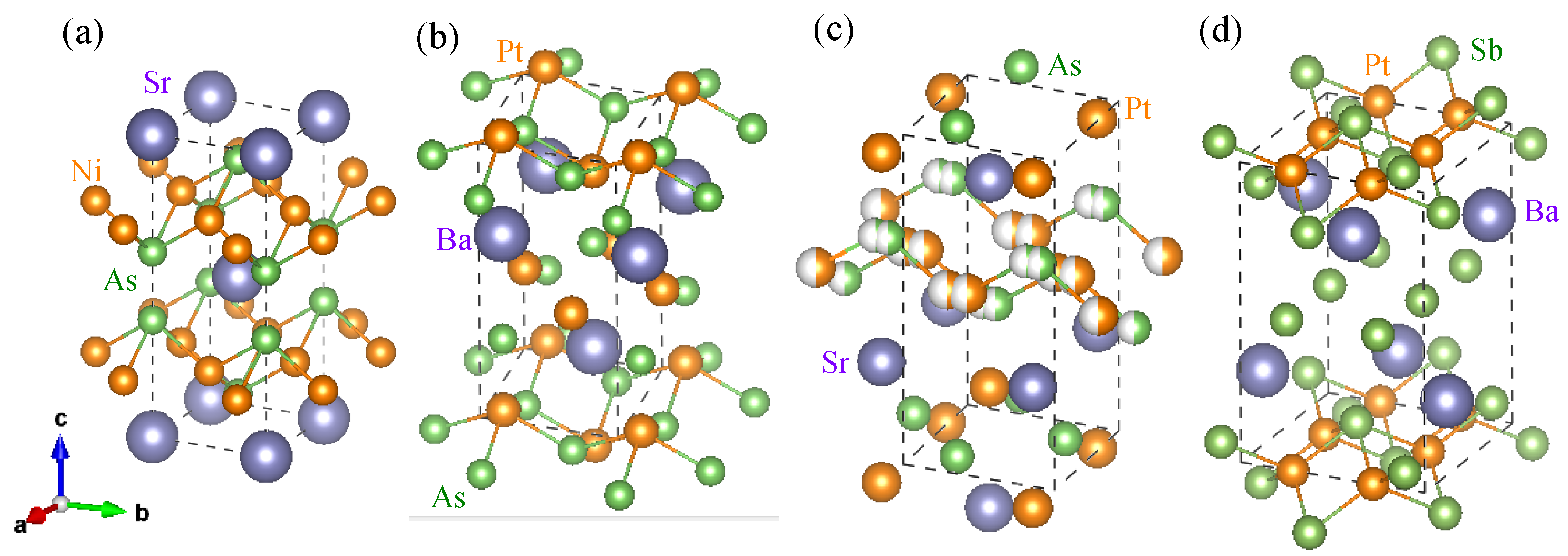
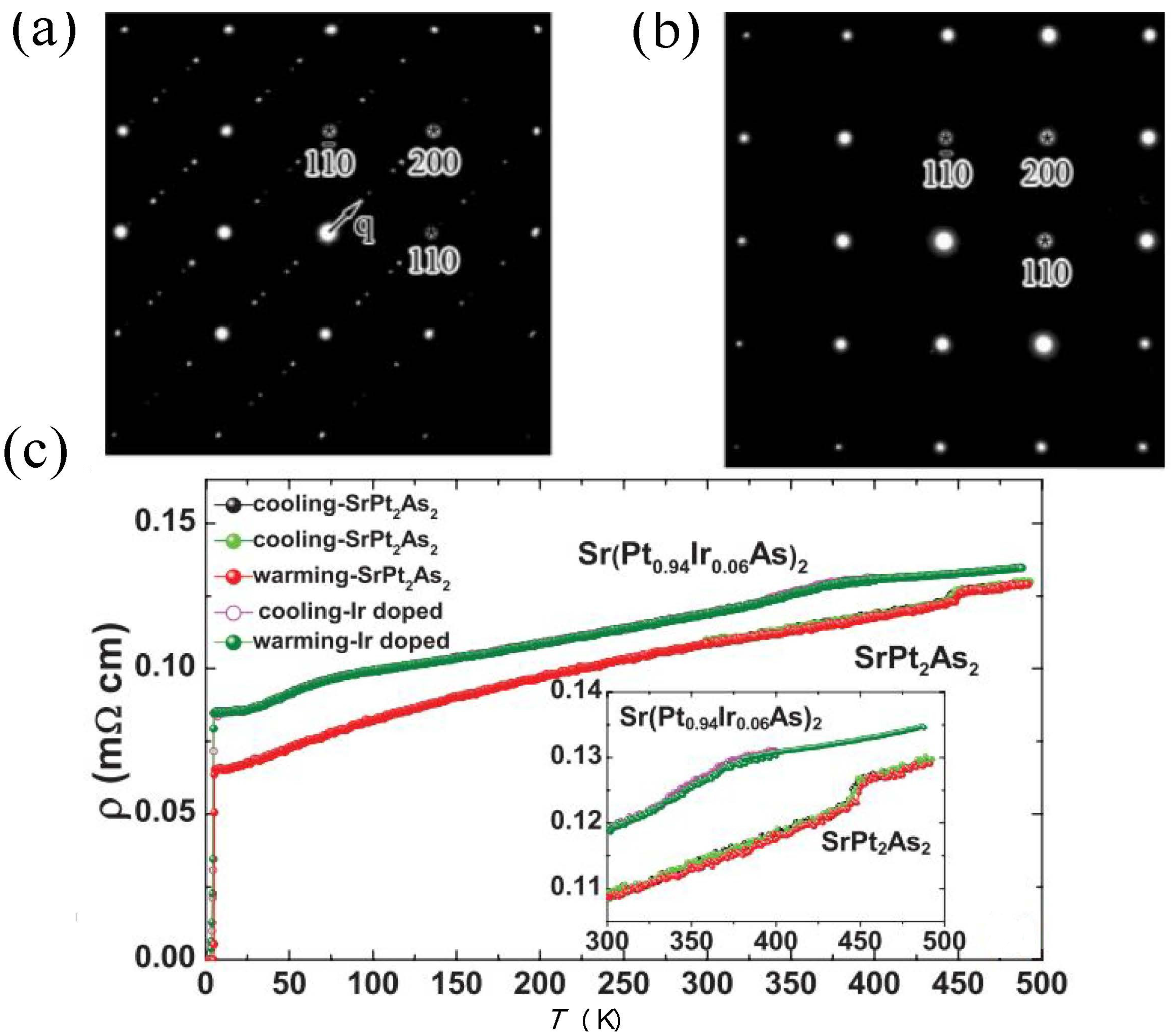
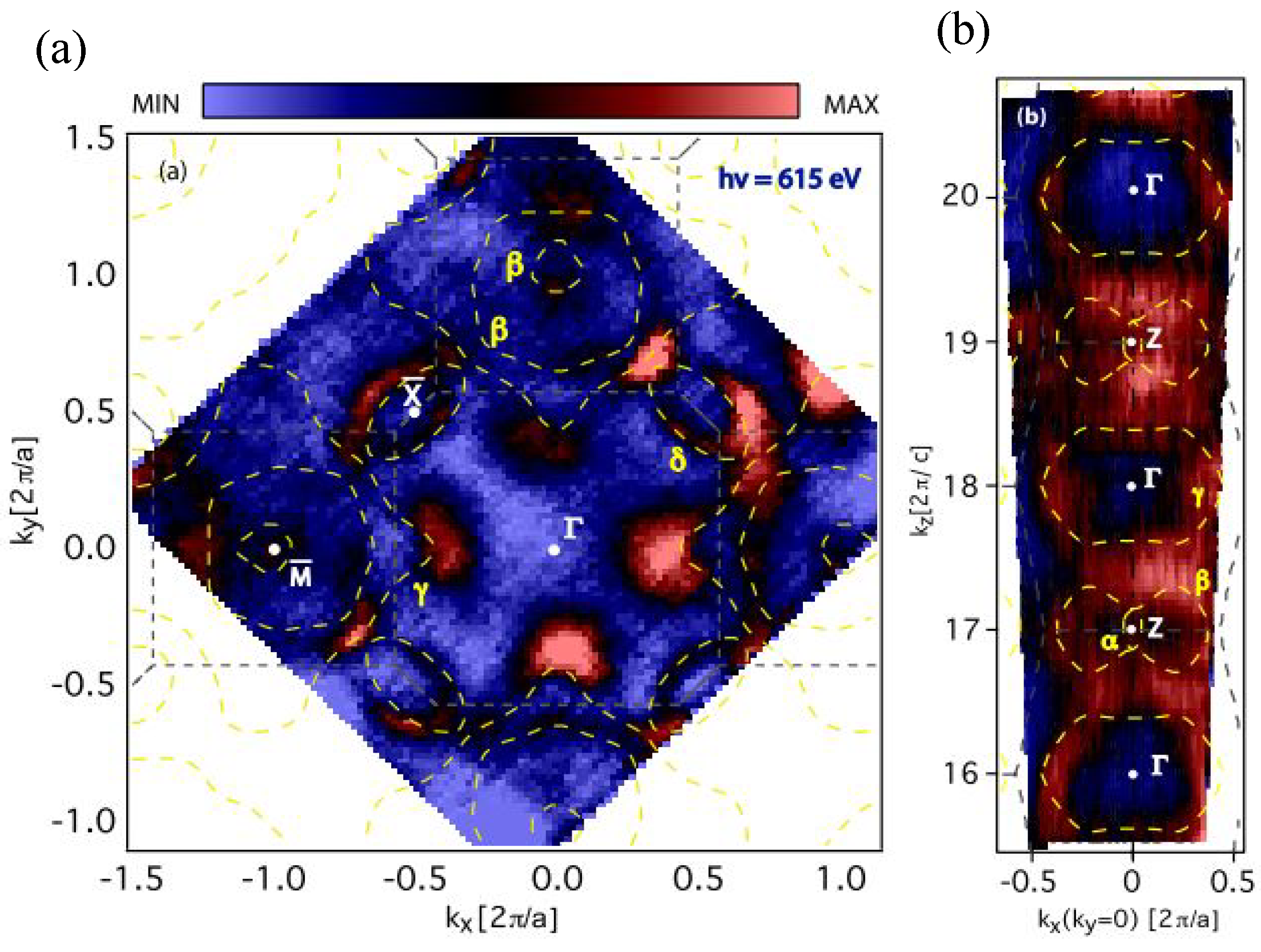
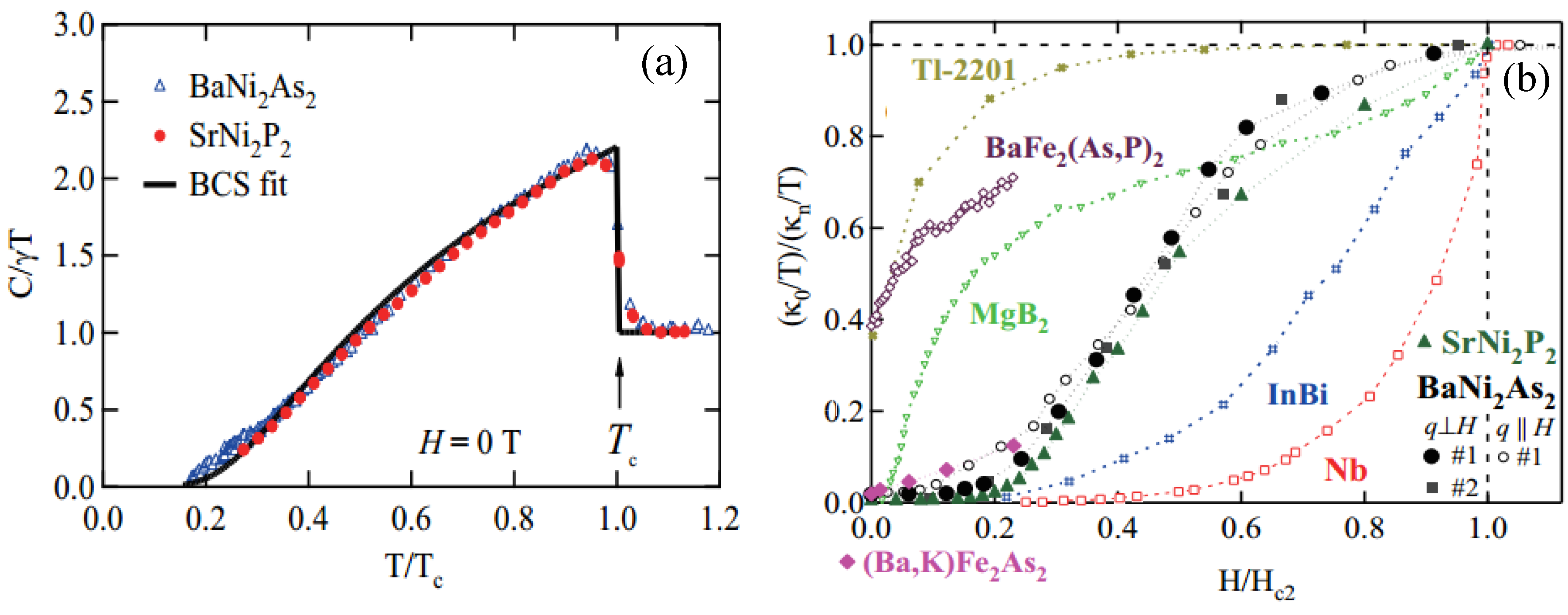
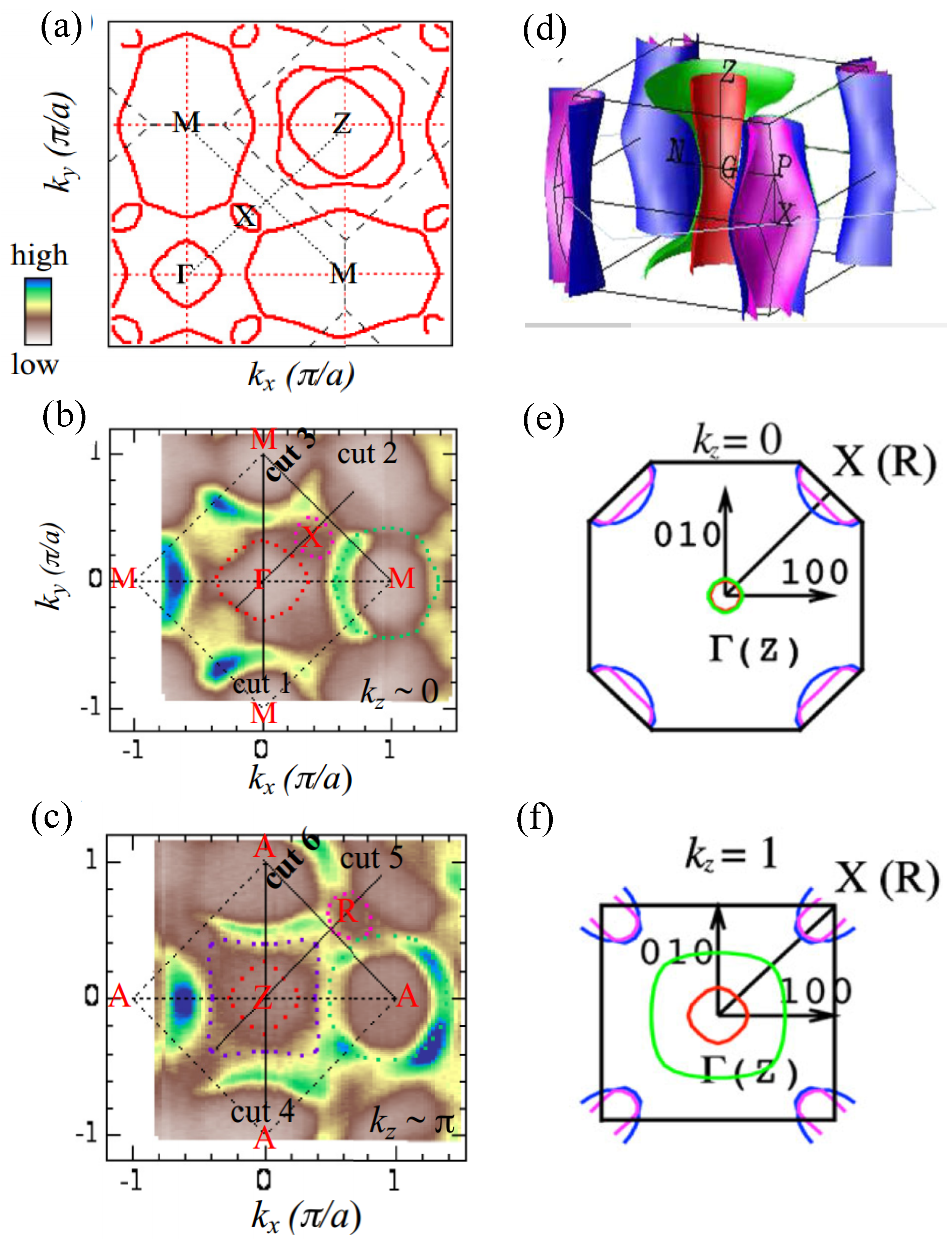
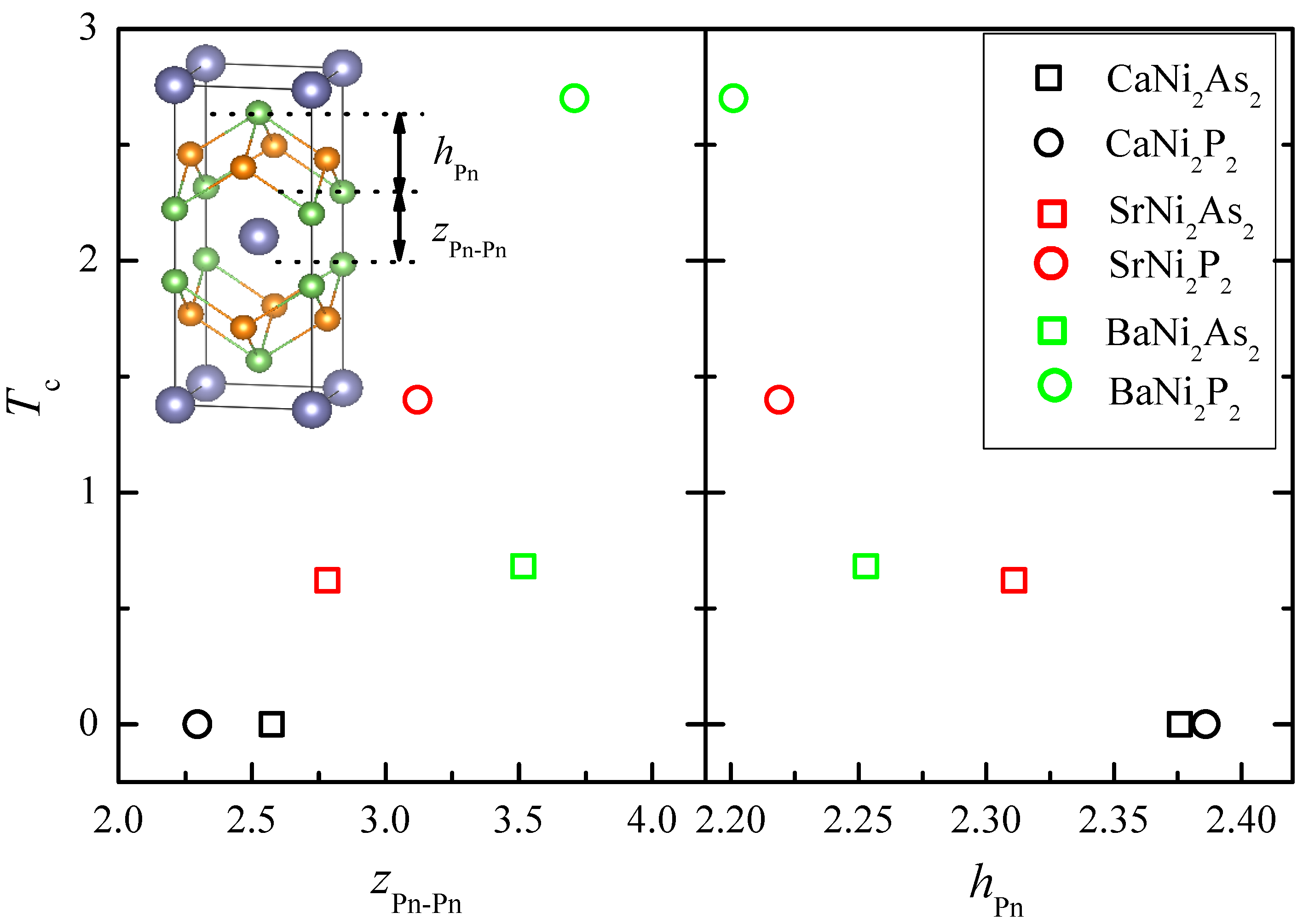
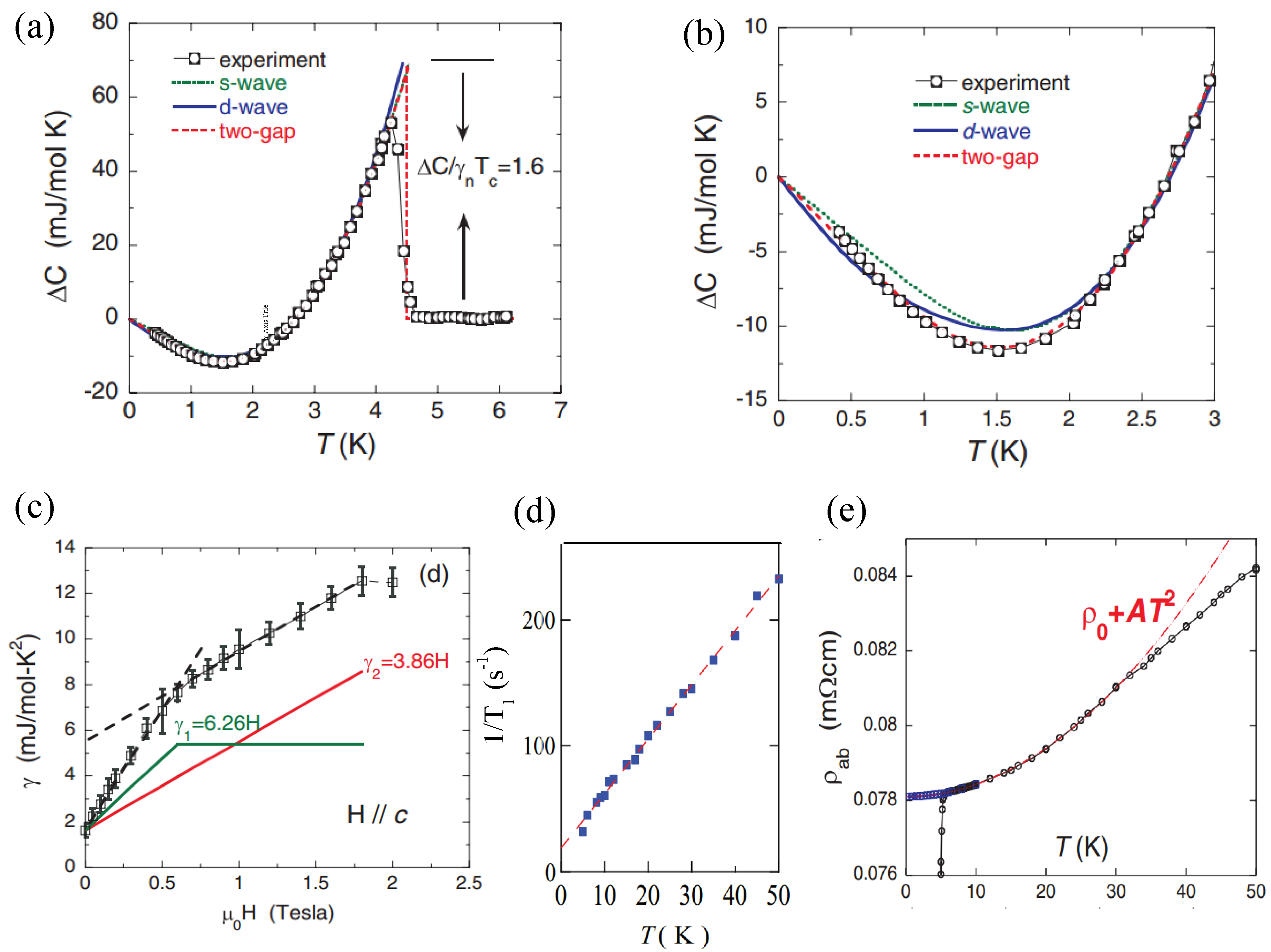
| Compound | SrNiAs | BaNiAs | SrNiP | BaNiP | CaPdAs | SrPdAs | BaPdAs | LaPdAs |
|---|---|---|---|---|---|---|---|---|
| space group | I4/ | I4/ | I4/ | I4/ | I4/ | I4/ | I4/ | I4/ |
| a (Å) | 4.1374 (8) | 4.112 (4) | 3.951 | 3.947 | 4.2824 (2) | 4.3759 (1) | 4.489 (2) | 4.3027 (27) |
| b (Å) | 4.1374 (8) | 4.112 (4) | 3.951 | 3.947 | 4.2824 (2) | 4.3759 (1) | 4.489 (2) | 4.3027 (27) |
| c (Å) | 10.188 (4) | 11.54 (2) | 10.432 | 11.853 (2) | 10.0880 (4) | 10.1671 (3) | 10.322 (2) | 10.268 (14) |
| (K) | - | 130 | 325 | - | - | - | - | - |
| (K) | 0.62 | 0.68 | 1.4 | 2.7 | 1.27 (3) | 0.92 (5) | 3.85 | ∼ 1 |
| (T) | ∼0.021 | 0.09 | 0.03 | 0.065 | 0.157 | 0.073 | ∼ 0.21 | 0.402 |
| - | ∼0.015 | 0.19 | - | 0.16 | - | - | - | - |
| (mJ/(mol·K)) | 8.7 | 6.15 | 7.5 | 14 | 6.52 (2) | 6.43 (3) | 4.79 (2) | 5.56 |
| ≃1.0 | 1.31 | 1.27 | 1.1 | 1.14 (3) | 0.77 (5) | - | 1.17 | |
| References | [7] | [10,30,43] | [8,44] | [9,38,45,46] | [17] | [17] | [17,24] | [20] |
| Compound | SrIrAs | BaIrAs | SrPtAs | BaPtAs* | SrPtSb | BaPtSb | BaRhP | BaIrP |
| space group | I4/ | I4/ | P | P4/ | P4/ | C2/m | I4/ | I4/ |
| a (Å) | 4.068 (1) | 4.052 (9) | 4.46 | 4.564 | 4.603 | 6.70156 (10) | 3.9308 (3) | 3.9469 (8) |
| b (Å) | 4.068 (1) | 4.052 (9) | 4.51 | 4.564 | 4.603 | 6.75246 (10) | 3.9308 (3) | 3.9469 (8) |
| c (Å) | 11.794 (3) | 12.787 (8) | 9.81 | 10.02 | 10.565 | 10.47440 (14) | 12.574 (2) | 12.559 (5) |
| (K) | - | - | 470 | ≃275 | 270 | - | - | - |
| (K) | 2.9 | 2.45 | 5.2 | 1.67 /1.33 | 2.1 | 1.8 | 1.0 (0.04) | 2.1 (0.04) |
| (T) | 1.4 | ∼0.2 | 2.5 | 0.85 /0.58 | 0.1 | 0.27 | 0.037 | 0.041 |
| - | - | - | - | 0.52 /0.33 | - | - | - | - |
| (mJ/(mol·K)) | 7.03 | 14.6 | 9.72 | 7.42 | 9.2 | 8.6 (2) | 9.2 (0.3) | 9.3 (0.6) |
| 0.91 | 1.36 | 1.67 | 1.27 | 1.29 | 1.37 | 1.17 | 1.41 | |
| References | [15] | [25] | [13] | [16] | [18] | [19] | [12] | [12] |
| Compound | LaPdSb | LiCuP | LaRuAs | LaRuP | SrPdSb | |||
| space group | P4/ | I4/ | I4/ | I4/ | P4//I4/ | |||
| a (Å) | 4.568 (4) | 3.8888 | 4.182 (6) | 4.031 (1) | 4.637/4.621 | |||
| b (Å) | 4.568 (4) | 3.8888 | 4.182 (6) | 4.031 (1) | 4.637/4.621 | |||
| c (Å) | 10.266 (2) | 9.5620 | 10.590 (3) | 10.675 (5) | 10.629/10.776 | |||
| (K) | ≤1.4 | 4.1 | 7.8 | 4.1 | 1.9/0.6 | |||
| (T) | 0.58 | - | 1.6 | 0.114 | 0.6/0.06 | |||
| (mJ/(mol·K)) | 6.89 | - | - | - | 8.36/5.37 | |||
| 1.325 | - | - | - | ∼1.4/1.43 | ||||
| References | [21] | [14] | [23] | [6,39] | [22] |
© 2017 by the authors. Licensee MDPI, Basel, Switzerland. This article is an open access article distributed under the terms and conditions of the Creative Commons Attribution (CC BY) license (http://creativecommons.org/licenses/by/4.0/).
Share and Cite
Zhang, P.; Zhai, H.-f. Superconductivity in 122-Type Pnictides without Iron. Condens. Matter 2017, 2, 28. https://doi.org/10.3390/condmat2030028
Zhang P, Zhai H-f. Superconductivity in 122-Type Pnictides without Iron. Condensed Matter. 2017; 2(3):28. https://doi.org/10.3390/condmat2030028
Chicago/Turabian StyleZhang, Pan, and Hui-fei Zhai. 2017. "Superconductivity in 122-Type Pnictides without Iron" Condensed Matter 2, no. 3: 28. https://doi.org/10.3390/condmat2030028
APA StyleZhang, P., & Zhai, H.-f. (2017). Superconductivity in 122-Type Pnictides without Iron. Condensed Matter, 2(3), 28. https://doi.org/10.3390/condmat2030028






